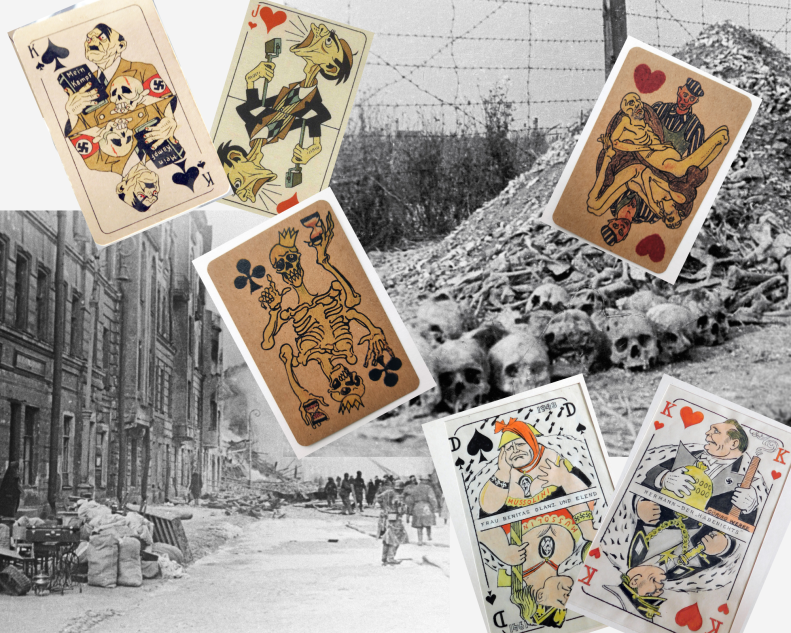"The deck of fate is whimsically shuffled," Bulgakov once said of the inscrutability of the intricacies of fate. "What is our life? A game!" - argued the opera The Queen of Spades. As long as playing cards have existed, people have looked for hidden meanings and messages in them. Can a card game be more than that? Yes. It can. A prisoner's survival in a concentration camp is a game with death. Morally disarming the enemy is a game with secret, powerful trump cards. Making a small ideological "bomb" in a besieged city is a game of overcoming monstrous obstacles. Our team have picked up three unique decks of anti-fascist cards, each with its own striking story behind it. A story of a difficult game, a perfect combination, and an unconditional win by a landslide.
First Deck: Under Siege
During the terrible winter of 1941-1942, Artist Vlasov Vasily Andrianovich stayed in besieged Leningrad. And it was during that very dark time that he received an order for his work. They decided to issue a deck of playing cards in the besieged city. A very special one.
This deck was made up of caricatures of Nazi leaders and allegorical images symbolising all that fascism brings to the world: famine, violence and death. And it was meant to be played primarily by the occupiers, the German soldiers. The solution was fundamentally propaganda, yet extremely original, witty and effective.
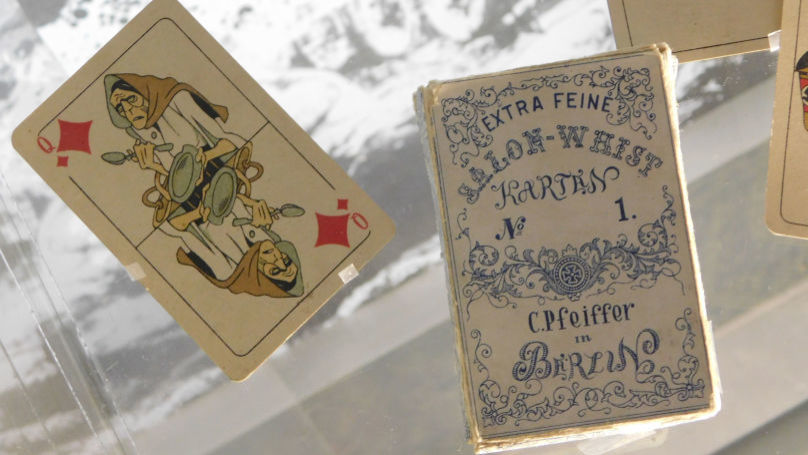
At the end of 1941, several artists were offered the opportunity to realize this idea, but Vlasov's sketches were deemed the best, and he was commissioned to prepare the designs. He took it as a combat order. The Political Administration of the Leningrad Front received photographs of the Führer and Nazi leaders, dictators of Nazi allies, and trophy magazines containing photos of the "top brass" of the Third Reich.
Vasily Andrianovich had never drawn a caricature or a map before. This was his first experience. And he took up the task diligently - in a siege-weary city without food, light, water or heating. Carrying out this order was a real feat.
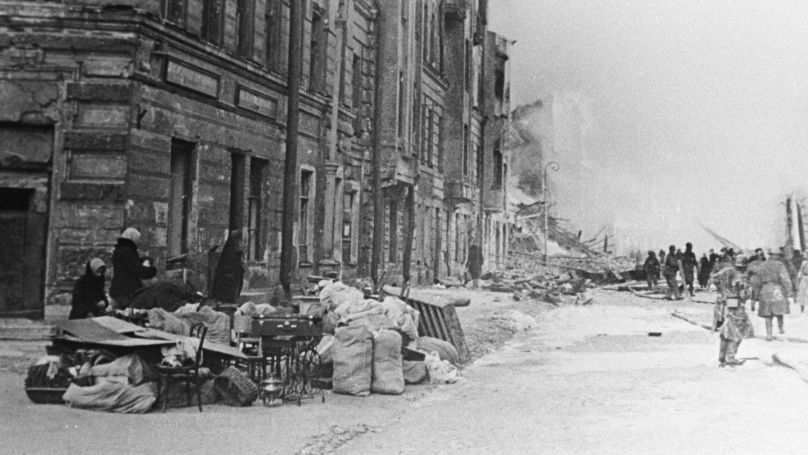
A total of 17 watercolour drawings had to be made; the original should have been twice the size of a regular playing card. The artist sketched each card in A5 format. He had to show the originals as soon as they were finished. Here is what happened each time.
He would take the finished sketches and leave his house regardless of the weather: the starting point was Solovyevsky Lane on Vasilievsky Island (now Repin Street). A member of the editorial and publishing department of the Political Administration, from Palace Square, would come out to meet him. They agreed to meet on certain days and at certain hours on the ice-covered Neva River. Why? Because it was too far. Neither had enough physical strength to make the entire trip on their own, all the way to the other and back.
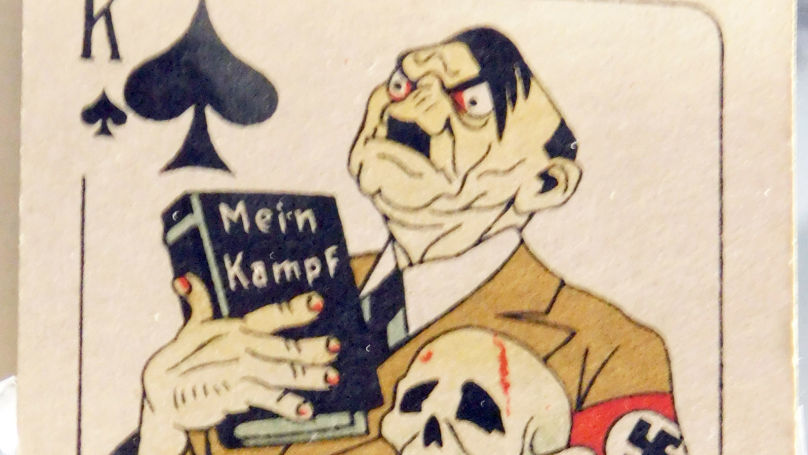
Moreover, Vlasov had to visit the 2nd Artistic Lithography in order to understand the specifics of playing card making. And to do this he had to travel from Vasilievsky Island to the end of Obukhovskoy Oborony Prospect – well over 20 kilometres.
The commuter transport vehicles stood silent; the city was covered with snow. Vlasov walked.
At the beginning of 1942, the originals were ready. Now they had to produce copies in the absence of electricity, heating and water in a deserted factory, where most of the workers had either left for the front line, were evacuated or had died from hunger, shelling and bombs. The lithography was now producing mostly technical documentation or various products for the needs of the front, and the production of cards had become an extremely complex task. For instance, the production process required a certain temperature regime and adherence to an extremely strict technological chain. Once again, the work was carried out by inconspicuous heroes. The chief specialist at the 2nd Artistic Lithography picked up the finished prints twice a week from the lithography shop on the Petrograd Side and delivered them to his plant behind Nevskaya Zastava, often dodging aerial bombing raids on the way.
To maintain the temperature required for the process, plywood booths were built in the workshop and were heated from the inside, lithographic stones were heated with blowtorches and water was boiled in a specially made tank. The originals, made in six colours, required six printing plates for each figure. That meant a total of 102 and a further 20 plates for the digital cards. After printing another ink, a stone weighing up to 100 kg had to be changed. The exhausted men would lift the stone onto the printing press with four to six of them. The electric drive was converted to manual - the crank was rotated by two people, changing every five minutes.
The printing of the "back" (first one colour, then another), then the card drawings, the cutting, finishing and packaging of over 700 sheets... And finally, the water-proof test. And then handing them over to the Front's Political Administration.
This story has faces and names. S.V.Rodionov, director of the 2nd Artistic Lithography, constantly supervised the whole process. E.A. Mironova, the Communist Party organiser. Setup worker A.I. Mikhailov, workers A.I. Kireeva and M.T. Pellinen, chief engineer at lithography No. 24 S.D. Levashov, chief process engineer at 2nd lithography A.V. Panchenko, member of Komsomol committee bureau M.S. Shilova (Shlenskaya), easel printer Sergey Malyshev, workers Gintov and Nefedov... And many others. People who contributed their last effort to create a small deck of anti-fascist cards as their contribution to the resistance, the struggle and victory.
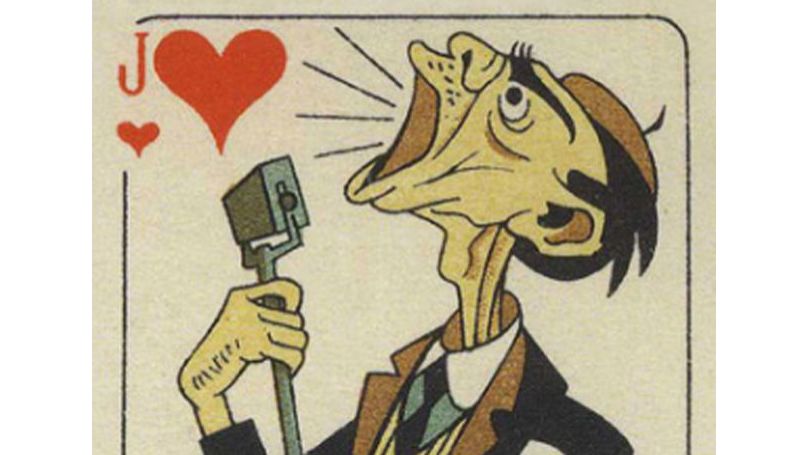
The deck was printed in a very small edition of just 700 copies. And then the cards went into the hands of the masses. They were distributed by partisans on the Leningrad front: they were thrown to German soldiers, left in trenches, barracks and houses during the retreat. And this propaganda was effective among the enemy troops: the Wehrmacht command, of course, immediately banned them, but the German soldiers played with them anyway - quite often, regularly and in secret. Occupying enemy positions, Soviet soldiers constantly found them in dugouts, barracks and trenches. And those who survived remembered that deck forever.
The deck came to the Krasnogorsk branch of the Victory Museum from a military archive. One day, an elderly German tourist visited the museum. He was once among the invaders, then was taken prisoner by the Soviets, then returned to his homeland. And now he has come to visit. And he could not hide his joy when he saw those very playing cards in the museum showcase.
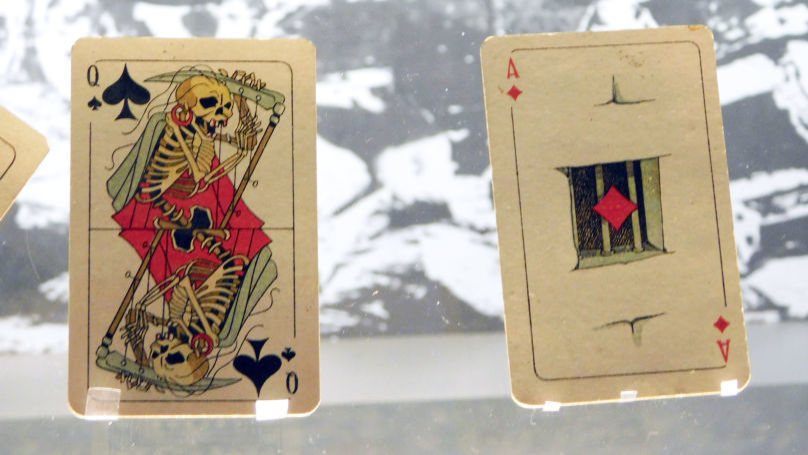
And Vlasov Vasily Andrianovich worked with the partisans for two years from May 1942 in the publishing group of the headquarters that led the partisan movement in the Leningrad and Novgorod oblasts. His other anti-fascist works included one of the first satirical posters of the Great Patriotic War, “Why do you lie, my zealous horse”, various newspapers, posters and leaflets, a series of drawings and lithographs about the people's avengers and a cycle of frontline sketches.
St. Petersburg has already several times held a thematic walking quest along the route of Vasily Vlasov, 32 km long, stretching from Vasilievsky Island, to the current metro station Proletarskaya, to Petrogradsky District, a 9-hour trip. During the first quest, out of a group of 20 healthy, well-fed, physically fit people, only five made it to the end of the journey.
“One should always play fairly when one has the winning cards” ― Oscar Wilde
Second Deck: Disarming Playfully
Ivan Kharkevich was a descendant of the famous noble family Chrapowicki. His father changed his son's surname after the October Revolution to make life easier. Ivan became an artist, worked at the Soviet children's magazine “Chizh”, created book graphics and illustrated books by Leonid Panteleev. And he spoke German perfectly. In May 1941, among other journalists and artists, he was summoned to military training and given the task of creating a newspaper, which in the event of war would be distributed among the enemy troops to demoralize the enemy.
From the very beginning of the war, having mobilised on the very first day, Kharkevich became a correspondent and artist on the North-Western Front, producing leaflets, posters and various propaganda materials to be used against the German troops.
One of the orders he received from the Main Political Directorate in 1943 was for a pack of cards. Kharkevich drew each character in two time periods, in 1941 and 1943, before and after Stalingrad.
As a member of the editorial board of the North-Western Front's newspaper " Friend of the Soldier", which was published for German POWs, Kharkevich spent much time with them and studied the words, jokes and slang used by German soldiers in their communication with each other. There were many defectors among the editorial staff who had an excellent command of the relevant trench jargon and willingly shared it with Kharkevich. He used all this when he set to work on the deck: he added text to the drawings – captions and whole phrases encoded on the "back" and understandable to any captive German.
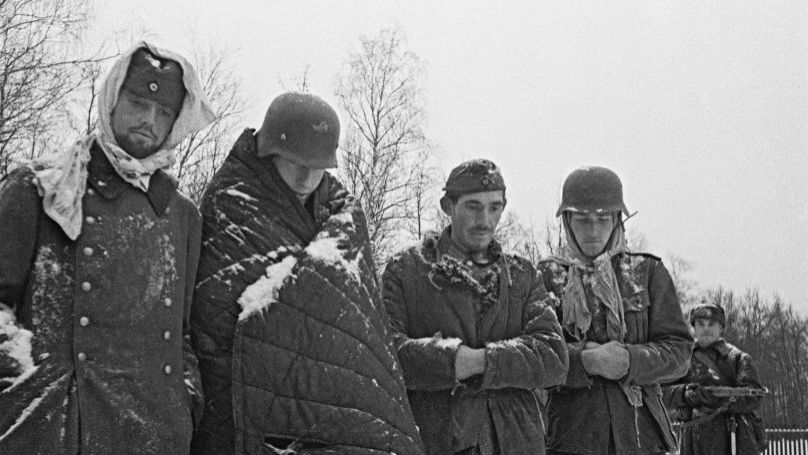
He was often asked: what was it like to work for the enemy? He replied: the prisoners were no longer enemies to be killed - now they were people who had to be spoken to in a language they understood, in familiar words, so that we would definitely win. Kharkevich was well aware that his cards would never reach the Nazi leadership, but he did not count on that at all: he designed them, drew them, and accompanied them with understandable captions in the expectation that the German soldiers would come to their senses and surrender.
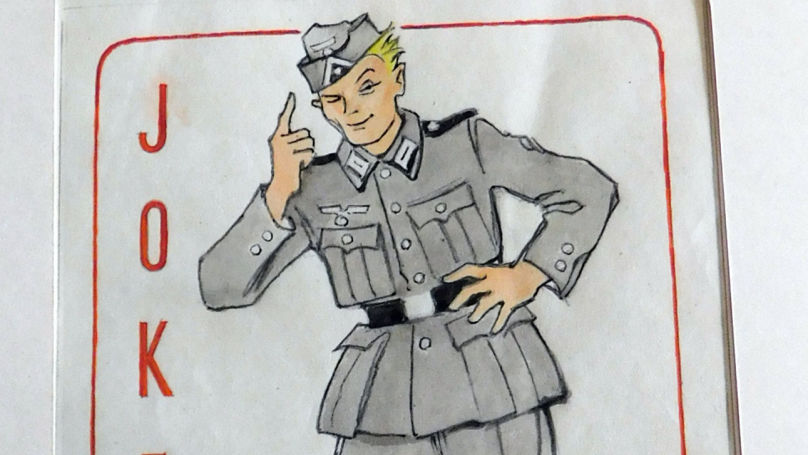
The signature on the unique Joker card, the only one of its kind representing an ordinary soldier, stated: “Though I may not be noticed at the beginning of the deck, at the end of the game I am the one who decides the fate of the game, and I bet Germany will be saved by Hitler's downfall. When the time comes, I become the main card because I make my own decisions.” A more elegant and yet powerful way to influence that same soldier is hard to imagine, a simple message: whatever your commanders may say, in the field, you are not a pawn, you are not a weak card, you do not have to blindly obey orders from above, you can stop, finish, remember your own will.
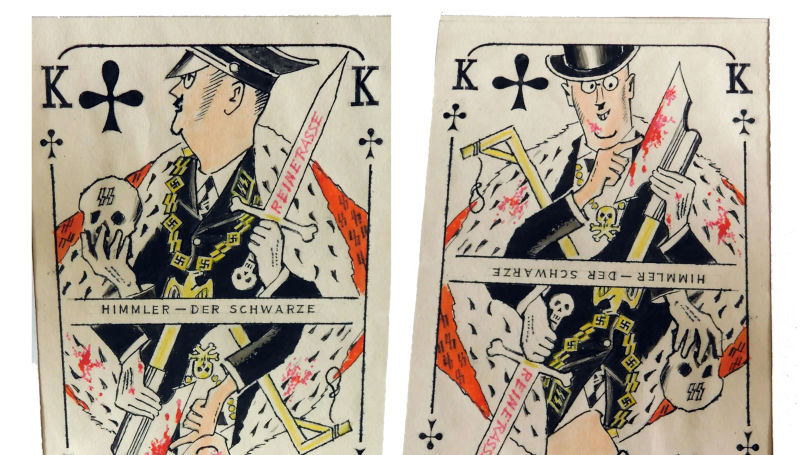
The "Kings" were Hitler, Goebbels, Himmler and Goering. The "Ladies" were Nazi Germany's allies - Hungary, Finland, Romania and Italy. The "Aces" were the industrialists who supported the Third Reich.
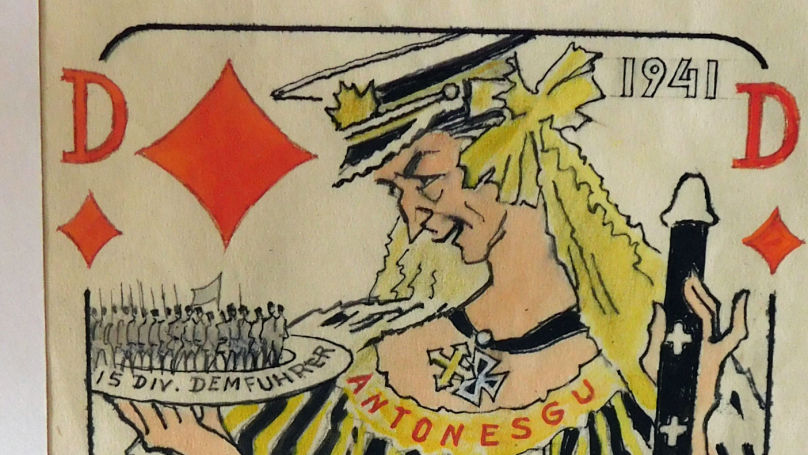
The Kharkevich deck was never printed: while the artist was working on it, the front line had moved towards Germany, and some of the facts in the captions on the cards had lost relevance.
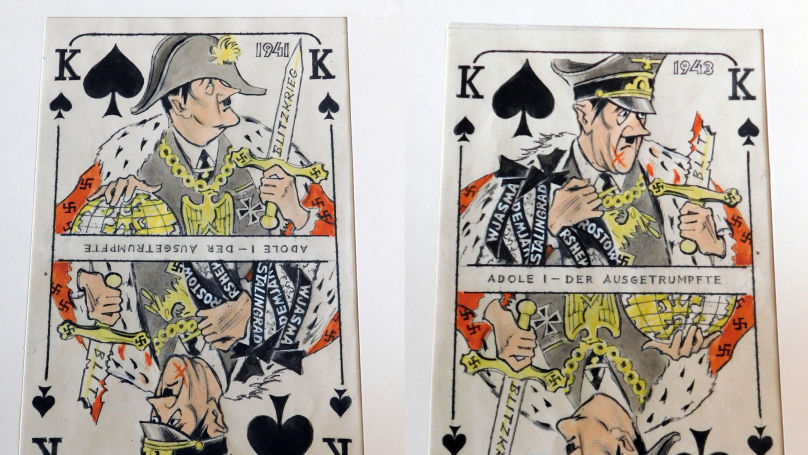
After the war, Kharkevich continued his work, both in his newspaper and in publishing houses of children's literature. His deck was only released in 2004 in a limited edition of 3,000 copies. Ivan Kharkevich himself donated the sketches of the fully-printed deck to the Krasnogorsk branch of the Victory Museum shortly before his death. He passed away almost at the age of 100 in 2007.
Both decks, on display at the Krasnogorsk branch of the Victory Museum, were used in Alexei Denisov's film “Kukryniksy Against Goebbels”. There are periodic souvenir replicas published based on both of them.
"God won't let you look at His cards, but anyone can see how He shuffles them" ― Graham Greene
Third Deck: The Deadly Tarot
To get hold of this deck, our editors' team from the “Nuremberg: Casus Pacis” project had to work very hard. There are many images of some of its cards on the internet but it is almost impossible to get a complete picture. In the end, we had to buy it from a foreign online shop.
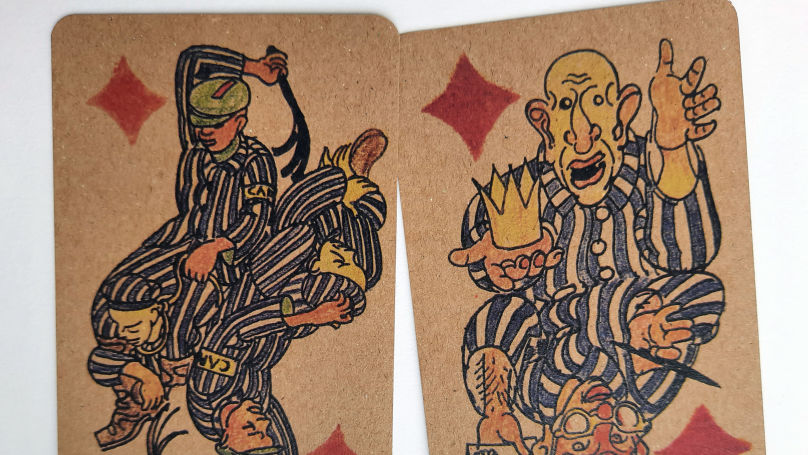
The first and foremost feeling that these cards evoke in any viewer is one of shock. One can often find sceptical remarks in Internet discussions: this deck is certainly a late fiction, which is retrospectively given weight by an implausible story.
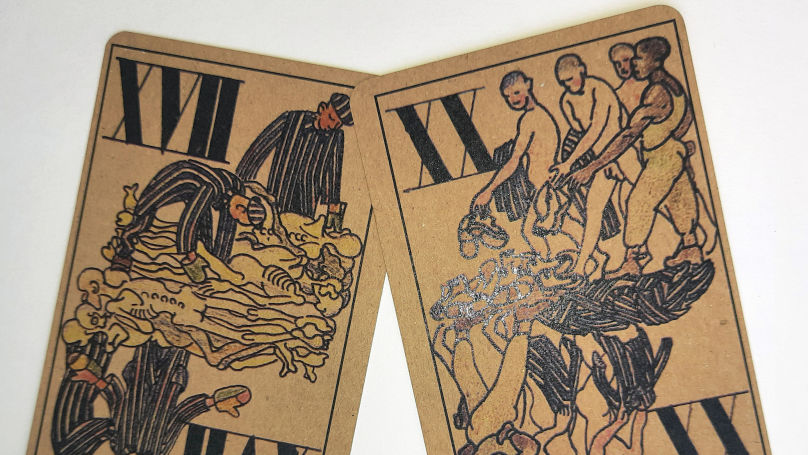
But no. It is not a fake. Not a hoax. Not a forgery. A unique deck, a sort of miniature visual version of Dante's Hell, the real deal. And every divination or solitaire in it describes anguish, humiliation and death. Without the possibility of other interpretations. Photographically accurate. Because it comes from life.
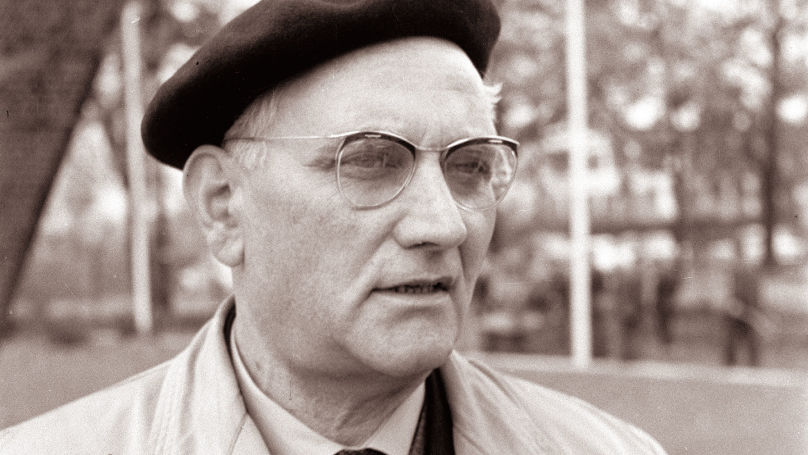
Slovene artist and architect Boris Kobe was born in Ljubljana in 1905. In 1929, he graduated from the Faculty of Architecture at the University of Ljubljana. And during World War II, he ended up as a political prisoner in the Allach concentration camp, the Dachau sub-camp near Munich. It was there that the Nazis built an exemplary system of physical and psychological torture and conducted medical experiments on its prisoners (some 500 brutal experiments were conducted there in 1941-1942). It was the slave labour of Dachau prisoners that was used in industrial enterprises, including the IG-Farben industrial concern that produced asphyxiating gases.
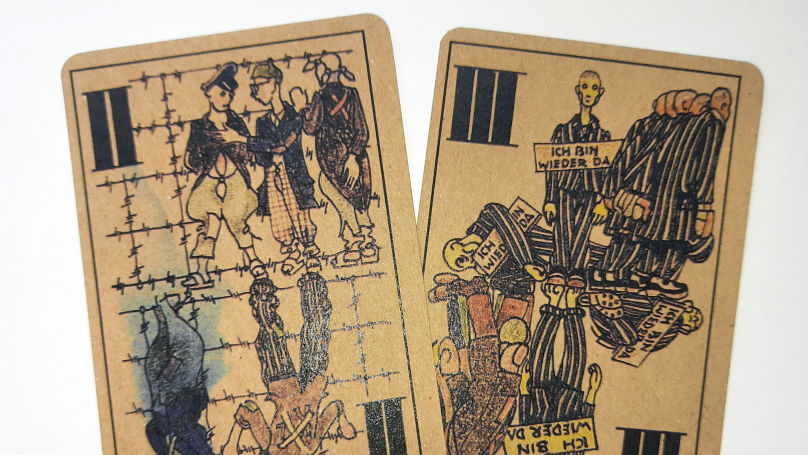
And it was there that Boris Kobe drew the famous deck - a testament to hell on earth, a monstrous reflection of a pernicious reality in miniature. He based it on the model of the tarot cards.
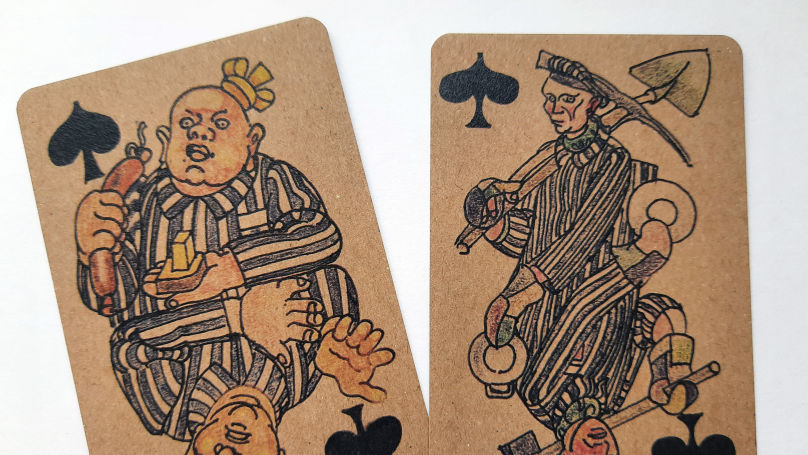
He most probably drew them after the liberation of the camp in April 1945 - this is depicted in card XXI, which shows the liberation, the Slovenian flag and a tombstone with the inscription "Burning Allah".
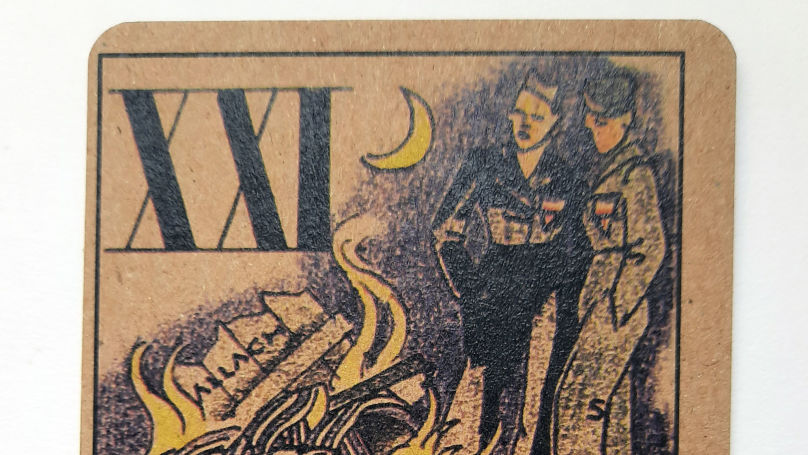
The characters include both disenfranchised prisoners and imperious capos. What is most striking in these images is the specific cruel humour that accompanies the details of the tragic humiliating scenes of life in the concentration camp. And, of course, the idea: a human reduced to a mere number.
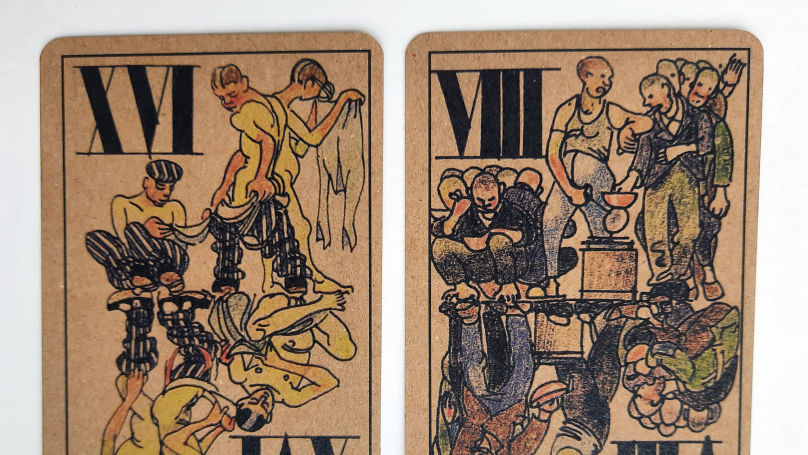
After the war, Kobe stopped painting and concentrated on architecture. His projects included the restoration of Ljubljana Castle together with the famous architect who once taught him at the university, Jože Plečnik. Boris Kobe passed away in 1981.
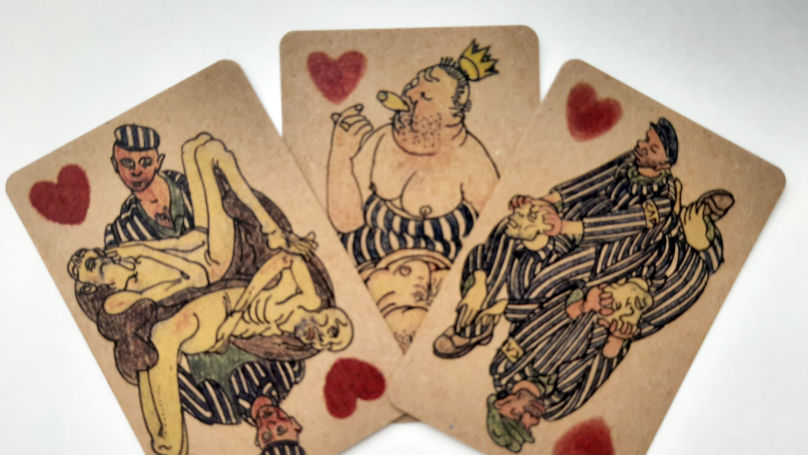
His deck was first presented to the general public at an international conference in Stockholm in 2000. The original is preserved in the Archives of the Republic of Slovenia. The set is published on the official website of the University of Minnesota Centre for Holocaust and Genocide Studies. In terms of visual impact, this unique artefact is matched only by the drawings of young concentration camp inmates, who artlessly depict the infernal reality that surrounded them.
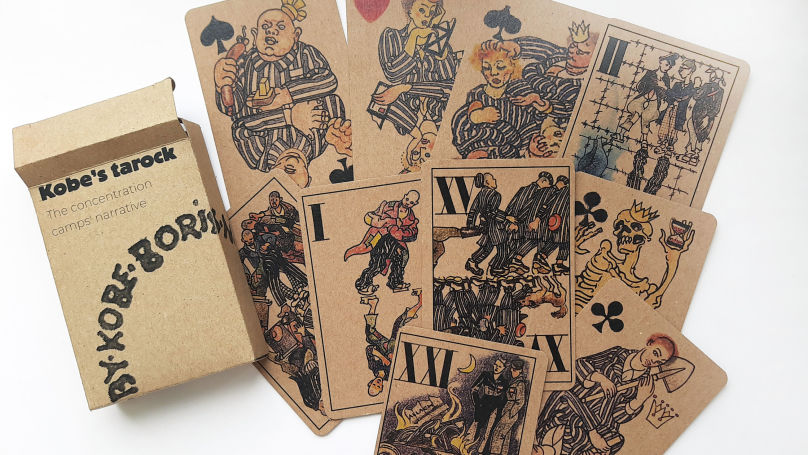
...You don't have to play these cards at all. You may not be able to play them, because of the strongest internal resistance and a sense of taboo. But discerning them, one by one, is worthwhile. Because a long time ago, three unique decks became the cast of a gigantic game between Death and Life, a game where Life swept the losing Death from the table in the final round.
The editors' team of the "Nuremberg: Casus Pacis" project express their gratitude to the staff of the Krasnogorsk branch of the Victory Museum for their cooperation and for providing us with materials and information.
Sources:
The Russian Card Society Web portal
Interview with Alina Zorya, deputy director for scientific and educational activities at the Museum "Nevskaya Zastava", on the TV programme "Good Morning"
The Centre for Holocaust and Genocide Studies Web portal
